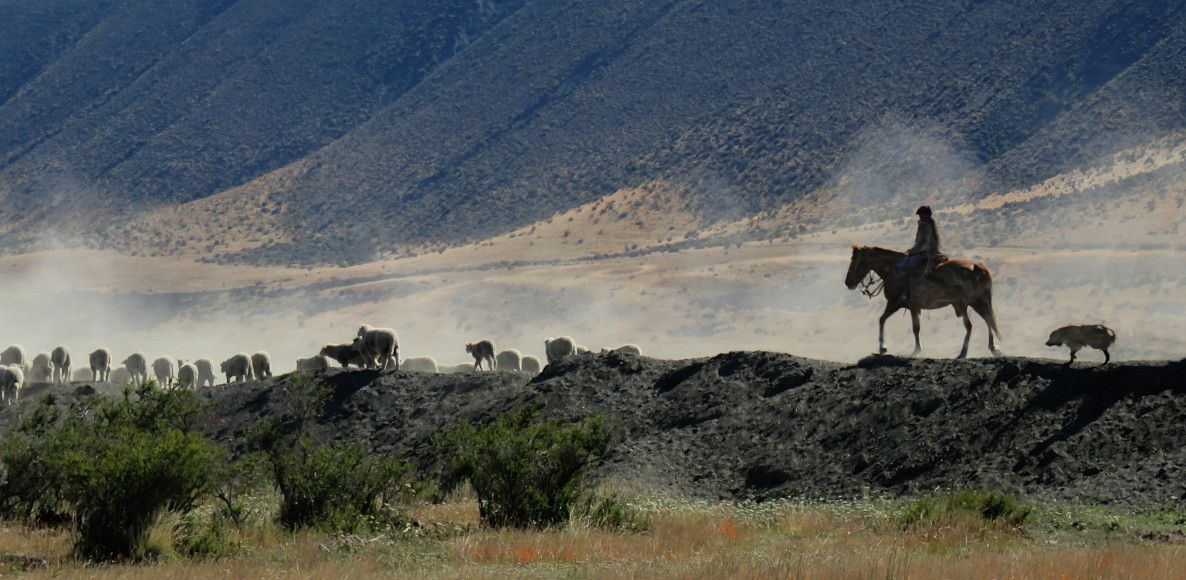Please forgive the tardiness of this episode. A lot of work was lost when Idiot He somehow managed to lose the original into a byte-vortex and it has been hard to find time to redo it. Hopefully future episodes will be released more rapidly and that this is a case of “better late than never...”
- - - - - - - - - - - - - - - - - - - - - - - - - - - - - - - - - - - - -
One of the great joys of being Idiots is that starting at the level of profound ignorance, it is so easy to find new things to learn!
It sounds Idiotic, but when the Idiots started planning their trip to Patagonia, they had no real sense of how big South America is. Their ultimate destination was southern Patagonia... and Patagonia is the region made up of the southern parts of Chile and Argentina... so the Idiots looked at flying into Santiago or Buenos Aires and renting a car to travel south. Hey... they' be in the right country - how far could it be?
Well... that reasoning makes about as much sense as saying you want to visit the Idiots in southern Arizona, so you are going to fly to Washington, DC, rent a car, and drive 1900 miles. It is actually worse than that - the roads from Santiago in central Chile to the largest city in southern Chile are challenging at best. With luck... five days... more prudent to allow for seven days each way! Beautiful days – but long driving days – just to get to where the Idiots actually wanted to spend their time.
A quick glance at a map of Patagonia tells the story – an incredible maze of water, mountains, glaciers and fiords. Santiago is far off the map to the north! This is a route for boats, not cars.
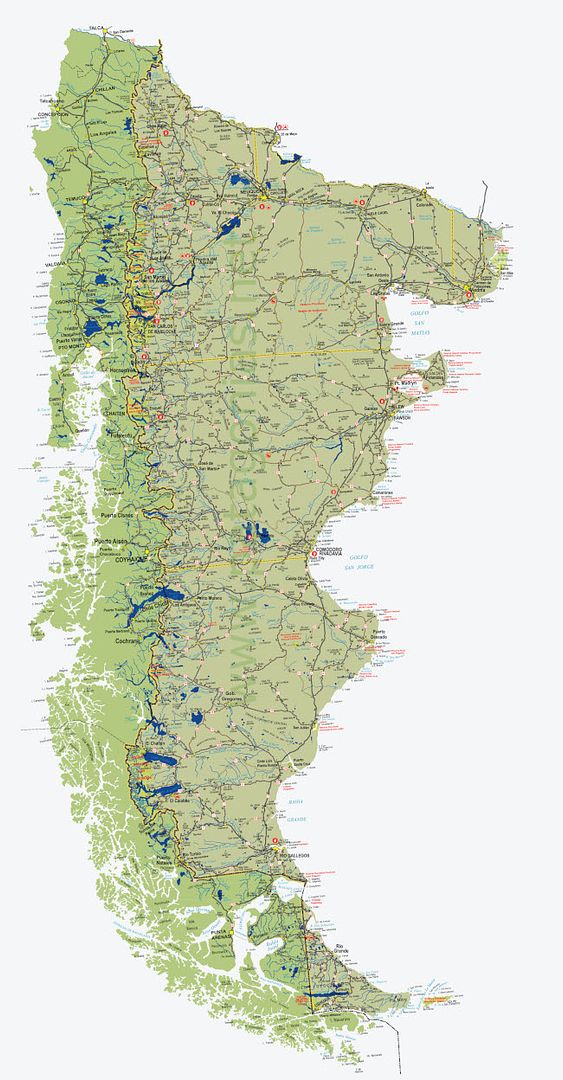
Revised plan... fly from Santiago to Punta Arenas and keep the road trip shorter. Sticking to the very southernmost part of Patagonia, how much driving could it be?
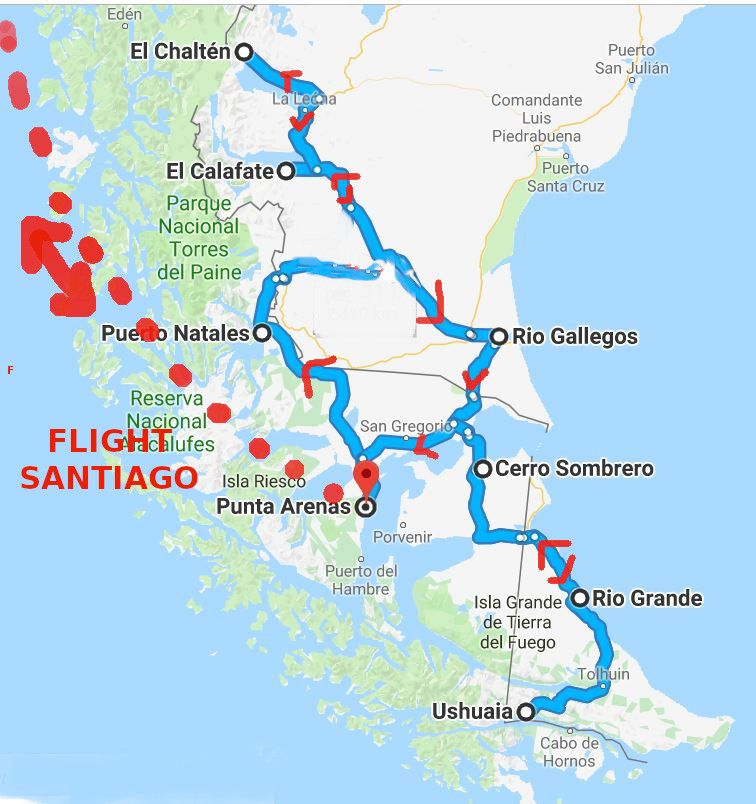
Well... a lot! - about 1800 miles with five border crossings and two ferries!
The first leg of the driving trip was Punta Arenas to Puerto Natales. The drive took only a few hours, but traversed centuries of history and eons of natural history.
Leaving Punta Arenas... oddities...
A John Deere farm implement display at the entrance of a restaurant - more than 10,000 miles away from Moline, Illinois - hints at the global impact of the blacksmith who invented a better plow in 1837.
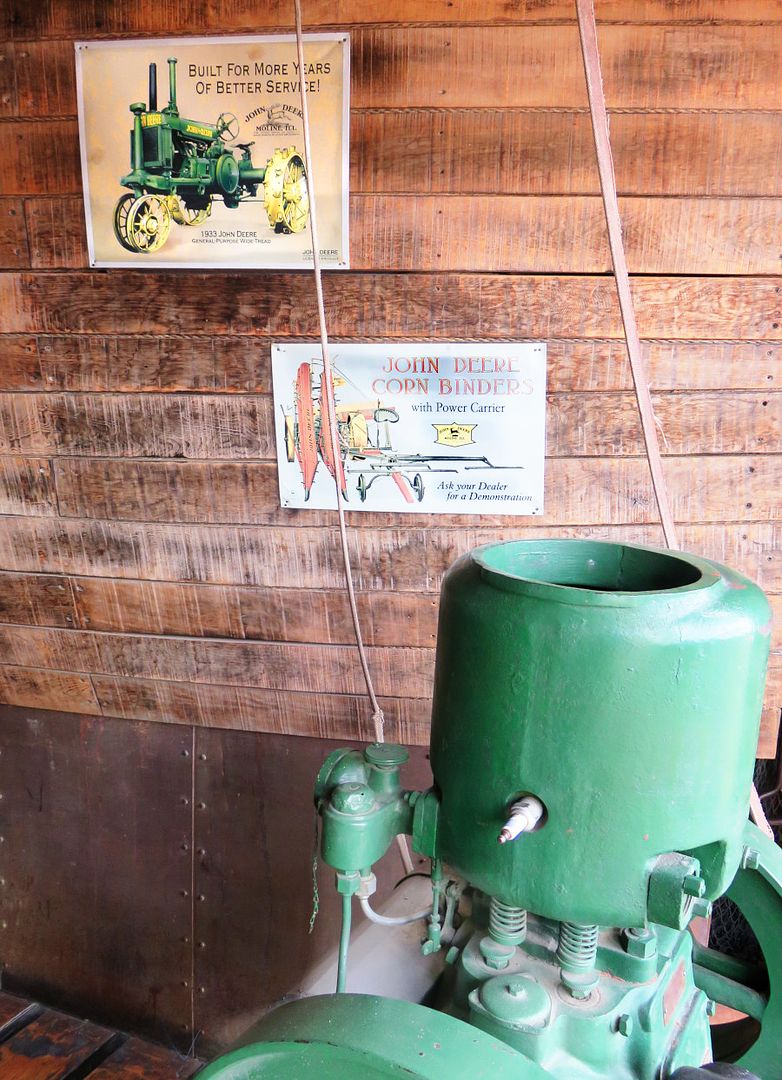

Roadside art – Patagonian Kachinas? The Idiots are not sure, but the forms suggest a reference to the regalia worn by the indigenous peoples of Patagoinia for ritual dances. Depictions are eerily similar to the costumes of pueblo indians of Arizona and New Mexico.
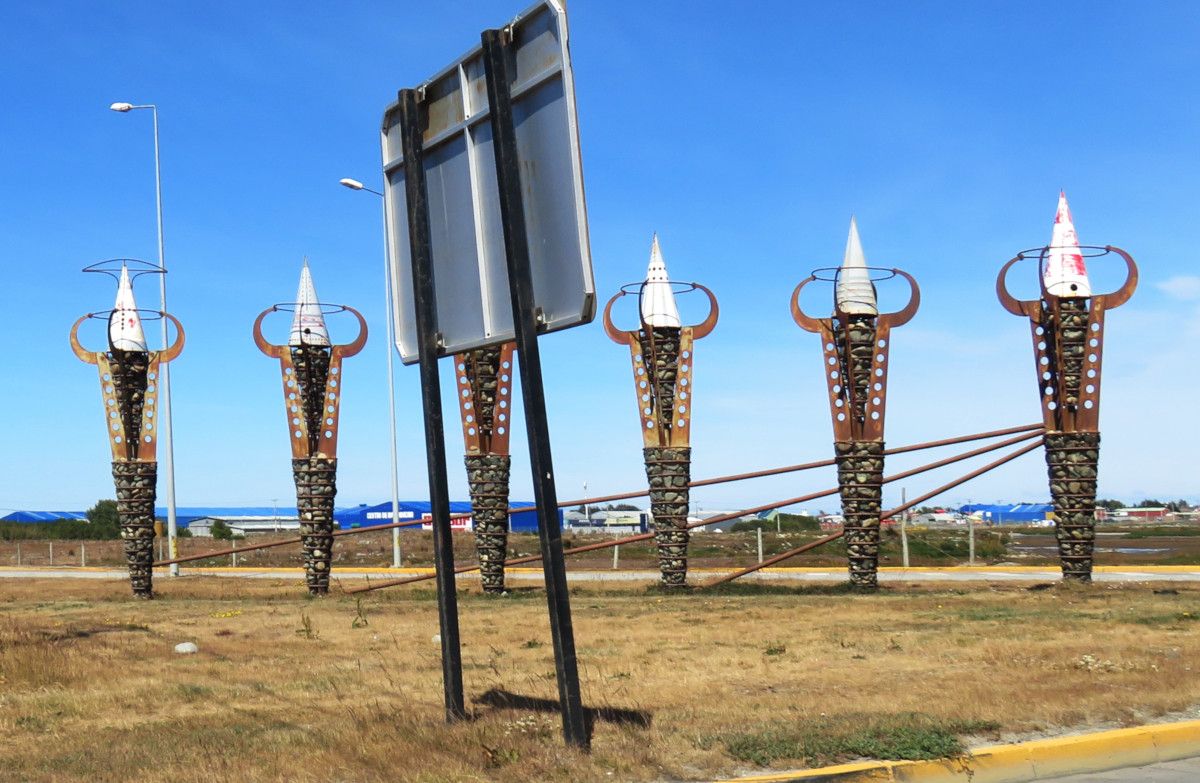
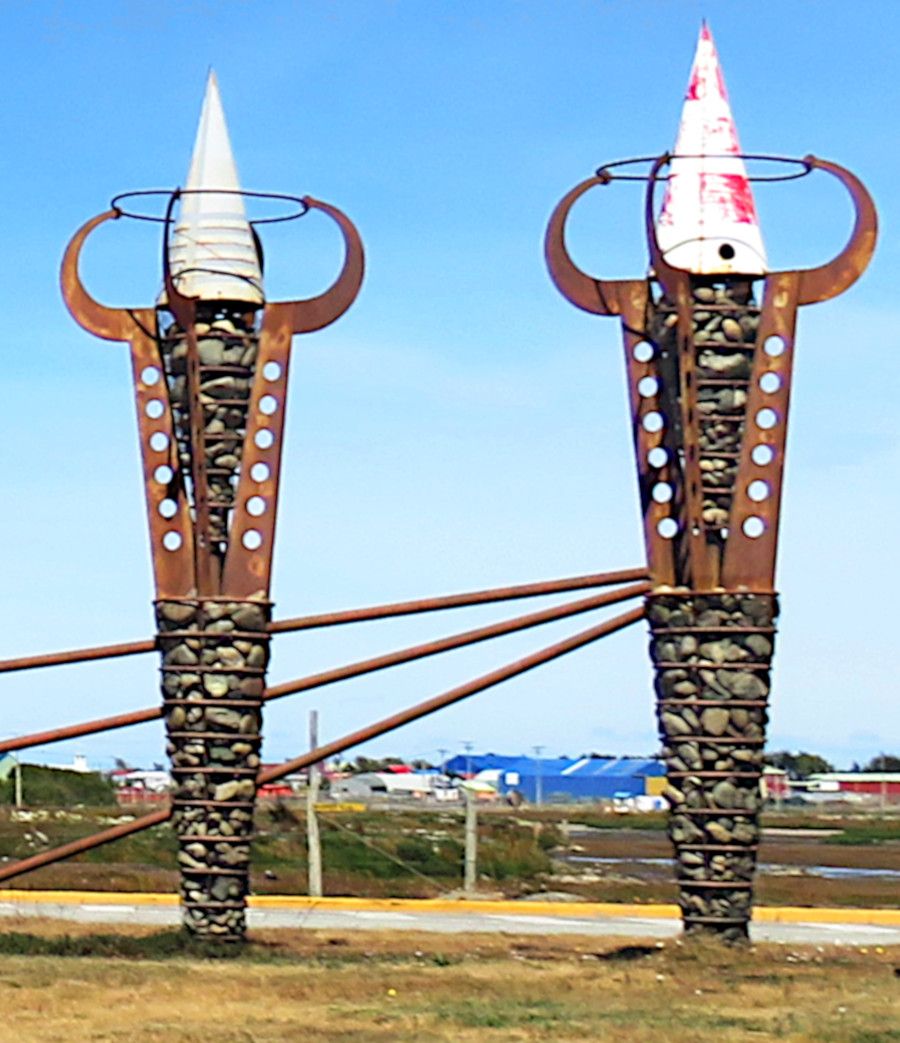
The Idiots were looking forward to seeing their first guanacos [wah-NAH-koes]. They were also a bit hazy on what guanacos are. Another opportunity to learn! Guanacos, along with llamas, alpacas, and vicunas are the American members of the camel family. Before research, the Idiots identification skills were limited...
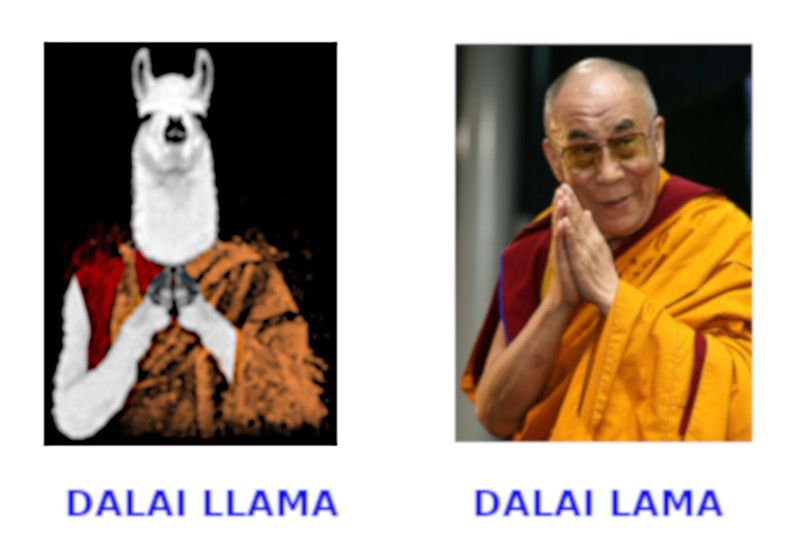
It was with great excitement they pulled onto the shoulder to grab a picture of their first guanaco sighting just outside Punta Arenas!
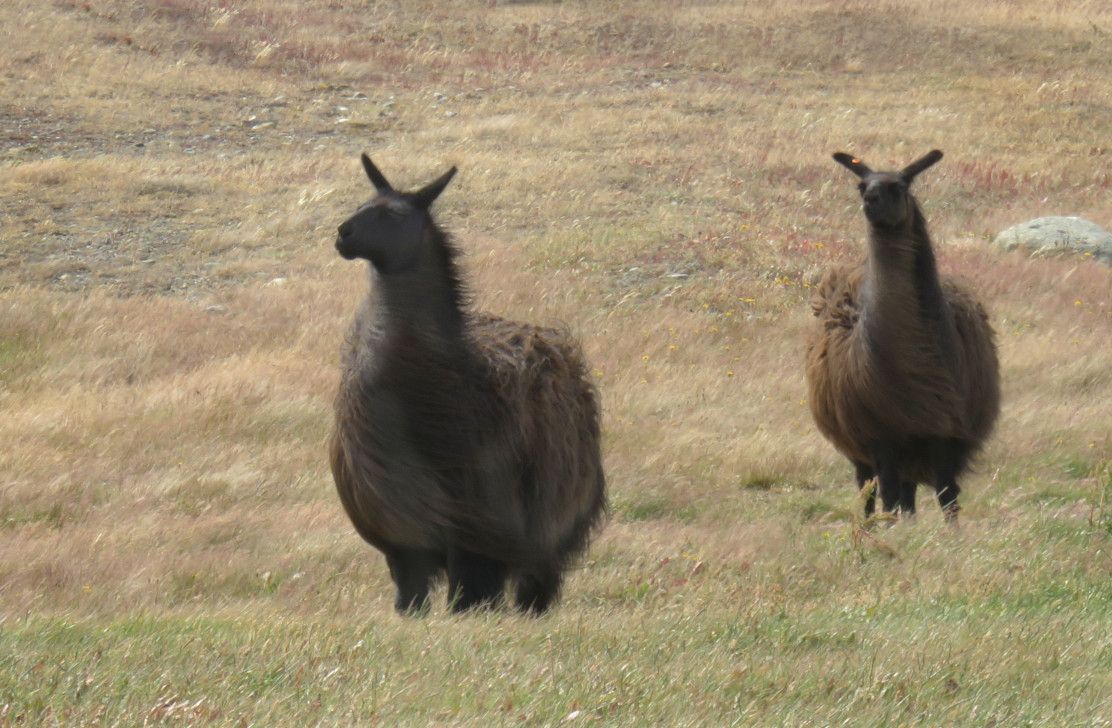
In the following weeks, Idiot She wondered aloud several times about the color differences among the guanacos – most of them with the same multicolor look, but a few being all one dark color or white. Idiot He responded at length – unburdened with the facts – about selection and variations and animal husbandry.
Until, of course, He looked it up. Those were not guanacos. They were llamas... on a farm. Idiot He did feel a bit smarter when they learned that modern llamas are the result of selection and breeding from the wild guanacos, so no shame in some confusion.
As noted in a previous episode, Patagonia's human history altered drastically in the late 1800s when it was discovered that the vast pampas that did not support large populations of grazing animals and had no large predators were the perfect setting for sheep. Huge estancias – ranches with a network of facilities and dwellings for imported workers – were established. Initially the focus was only on wool, but as mechanical refrigeration became available, meat also became lucrative. At its peak in 1952, there were an astonishing 21 million sheep in Patagonia. Today production has fallen considerably, but there are still close to 10 million spread across the vast grasslands.

In elementary school, the Idiots dutifully filled in their blank maps of South America, marking the long boundary between Chile and Argentina with little mountains and labeling them the Andes. The fine points were lost and the complex history was never taught. In the far south, Chile controls the land on both sides of the Andes. They were somewhat confused, but delighted, to find themselves driving north in Chile and looking west at a parade of Andes mountains.
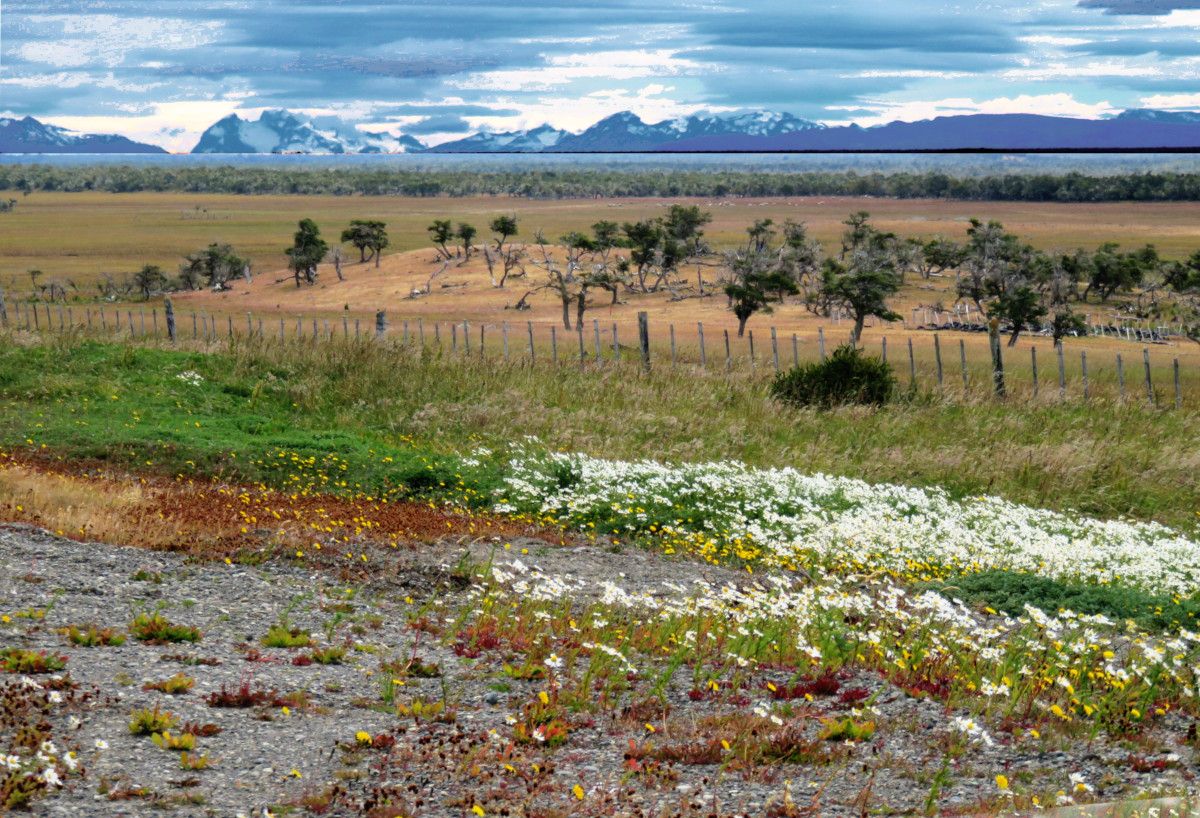

The scenery was lovely and even though distant, they had some fun bird sightings.
The Idiots think of flamingos as tropical birds, but the Chilean flamingo has adapted to the challenging climate of southern Patagonia.
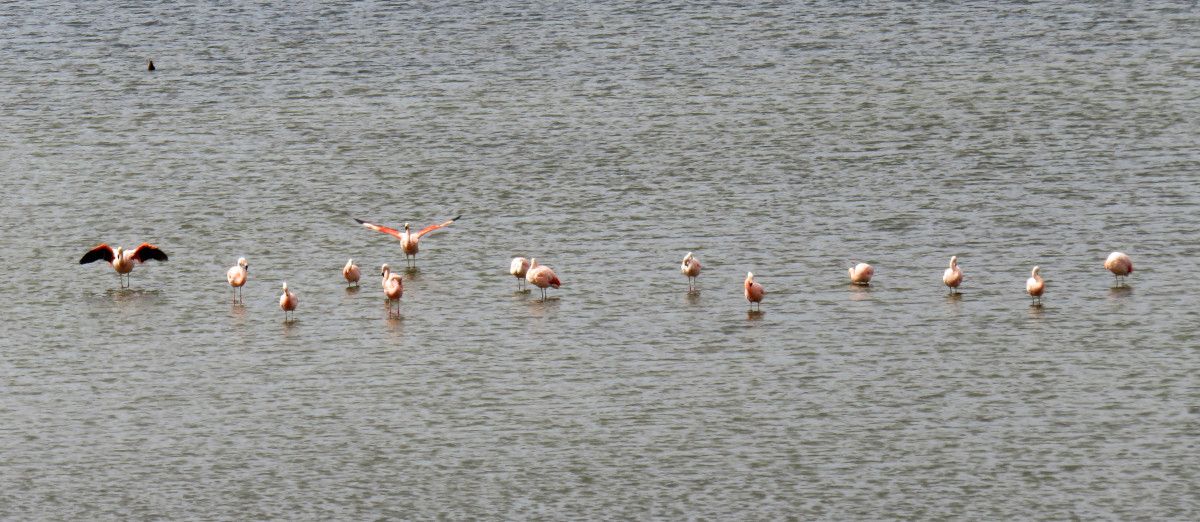
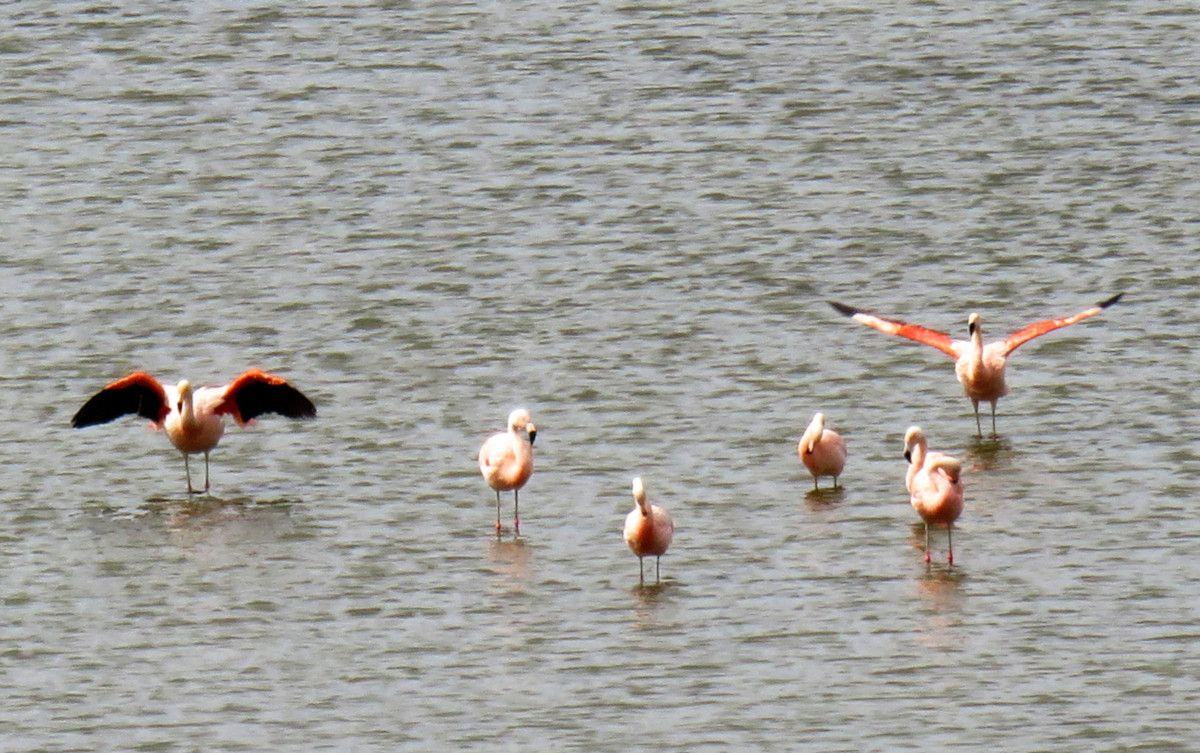
There are four species of steamer ducks – heavy birds unique to southern South America. Three of the species, including the aptly named flightless steamer duck, cannot fly. The cleverly named flying steamer duck can fly – barely – but they rarely choose to! Steamer ducks apparently got their name because when they need to move rapidly in the water, they use their strong wings and huge webbed feet to beat at the water and make an uproar reminiscent of an old paddle steamer.
This is a flying steamer duck – not flying. Extreme telephot often just looks fuzzy, but in this case the result reminds the Idiots of the beautiful waterfowl drawings done by their artist friend, Robert Lundgren.

Another extreme telephoto shot that resulted in a painting-like effect... a black-faced ibis.
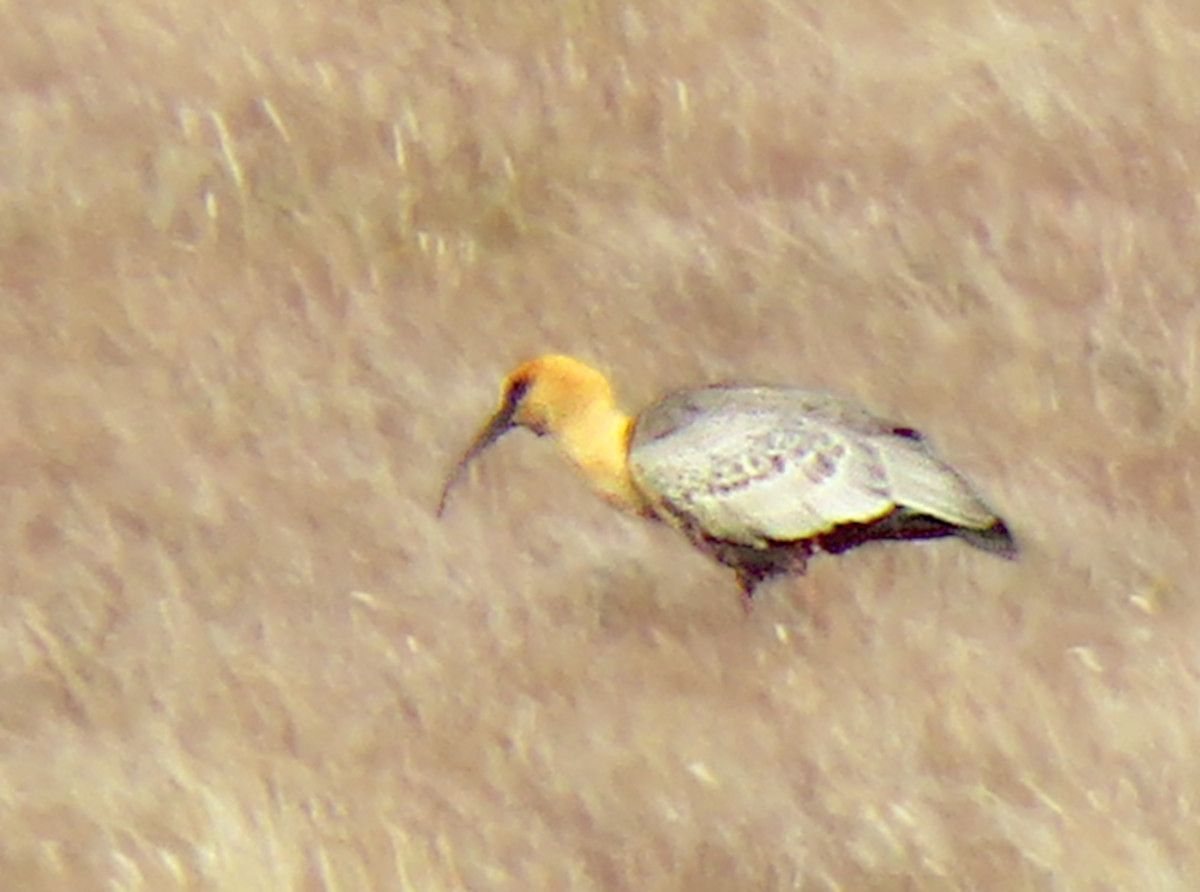
Puerto Natales is much smaller and funkier than Punta Arenas. It's economy is driven by tourists coming to visit Torres del Paine. It's pleasant name – “Home Port” - doesn't hint of the disturbing history of the area. It is located on a body of water with a more ominous name... Ultima Esperanza – Last Hope Sound.
When explorations are discussed in history class, the emphasis is on the successes. Winners leave a legacy while losers tend to fade from memory. Thus most never learn the sad story of Juan Ladrillero. He was a Spanish sailor who went to sea as a youth and moved steadily up the ranks, making numerous important and successful explorations. But it is his last voyage that probably reduced his memory to a footnote.
In 1557, he left a comfortable retirement in Lima when the governor of Chile asked him to command three ships to sail down the coast of Chile and through the Straits of Magellan, cementing the Spanish claim on the region.
From the start, it was an ill-starred voyage. Twenty-three days from departure his ship became separated from the other two and he continued on alone. Exploring the multiple inlets, channels, and fiords for months, he was unable to find the entrance to the Straits. When he arrived in the sound near what is now called Puerto Natales, he named it Last Hope because he considered it the last chance to find his way into the Straits. Unfortunately, the route ended at the face of a glacier. Contrary to the implications of “last hope” - he sailed on.
And sailed right past the entrance to the Straits. More fruitless searching left the ship stranded in a remote bay for 5 months, waiting out the winter. Eventually, they did find the Straits and sailed through to the Atlantic, staying only a short time before turning around and returning to Valdiva – 16 months after leaving. Ladrillero's detailed records provided guidance used by sailors for the next 300 years... but due to the extraordinary privations of the voyage, only Ladrillero and two sailors made it home alive – and Ladrillero died within the year.
So... along the waterfront in Puerto Natales there is a plaque that few read, memorializing Juan Ladrillero and his status as the first European to visit the area... but his life and contributions rarely get more than a footnote in histories of the explorations of the Americas.
Bright colors can't hide the wear and tear the brutal climate on structures and people of Puerto Natales.
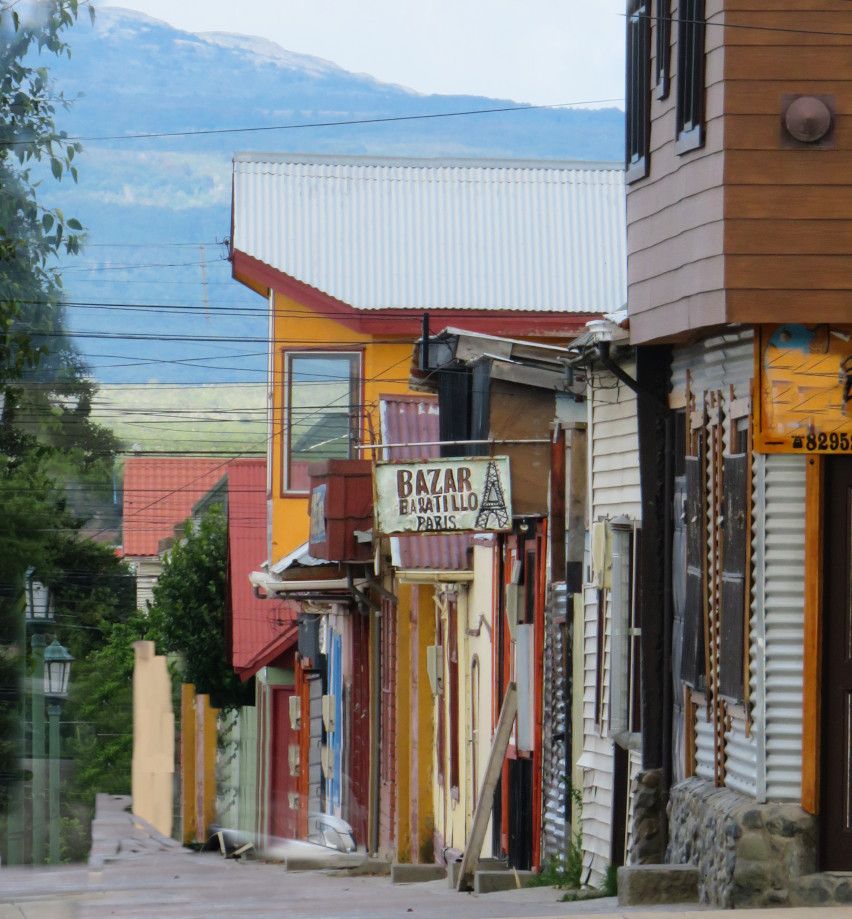

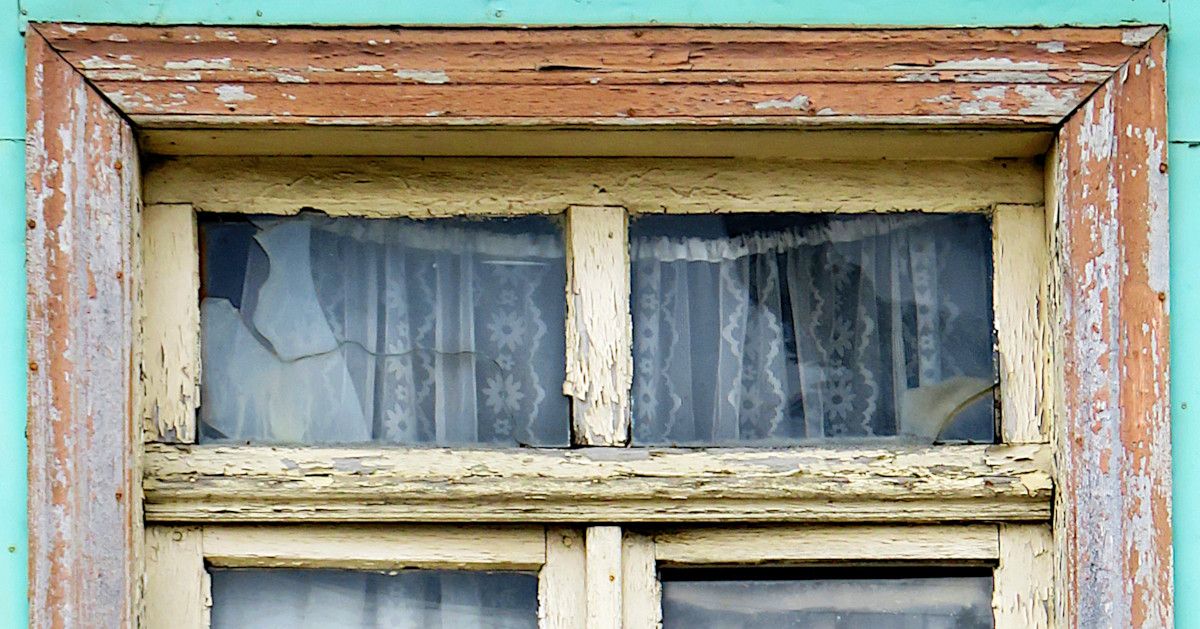
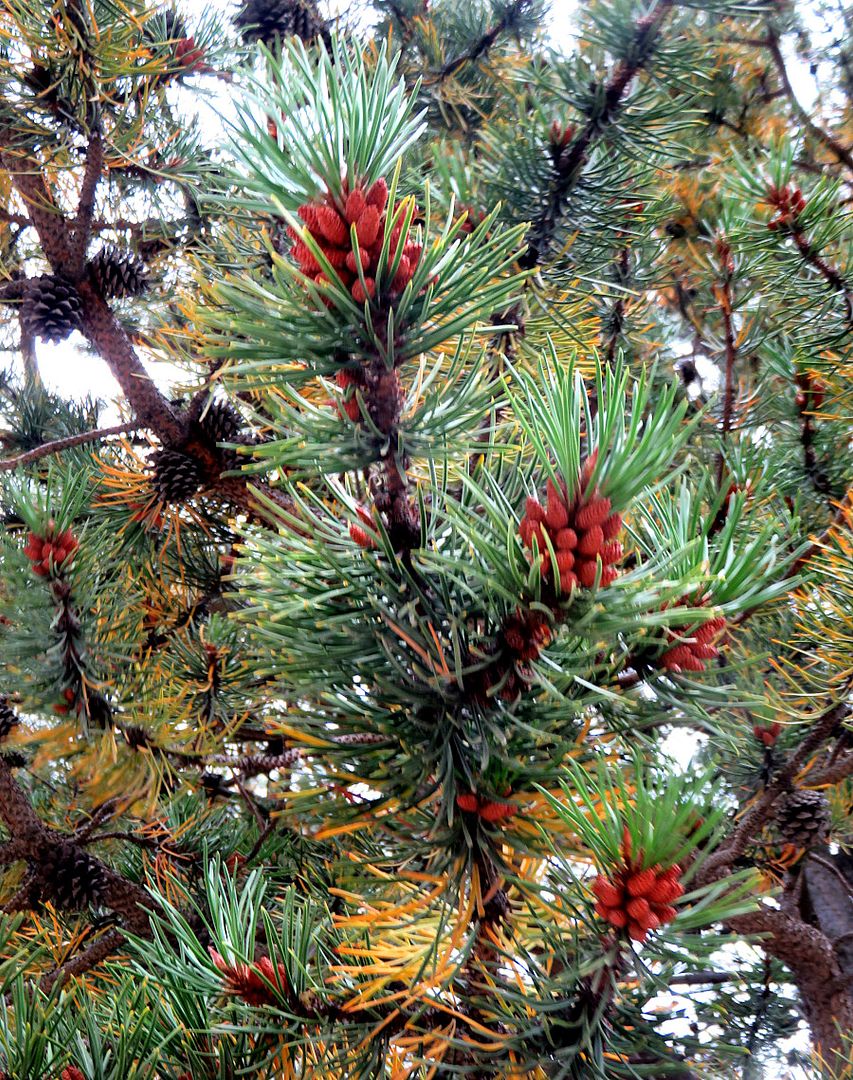
The “flag tree” symbol is seen throughout Patagonia... a visual reminder of the near-continuous winds.
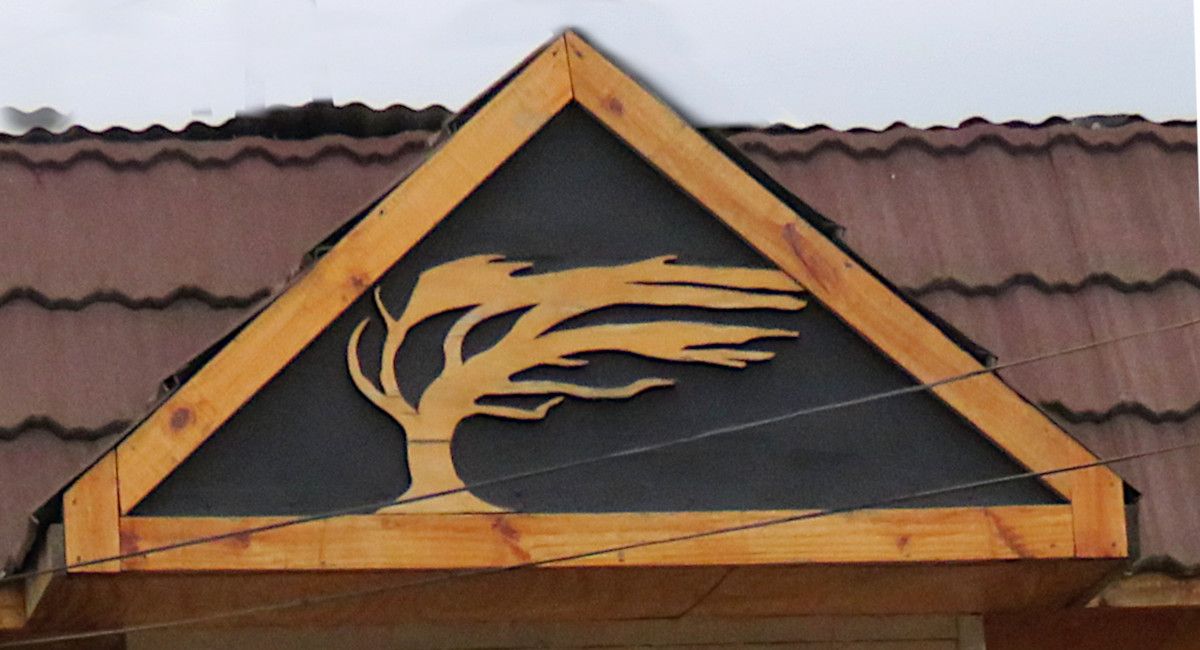
People-watching in Puerto Natales...
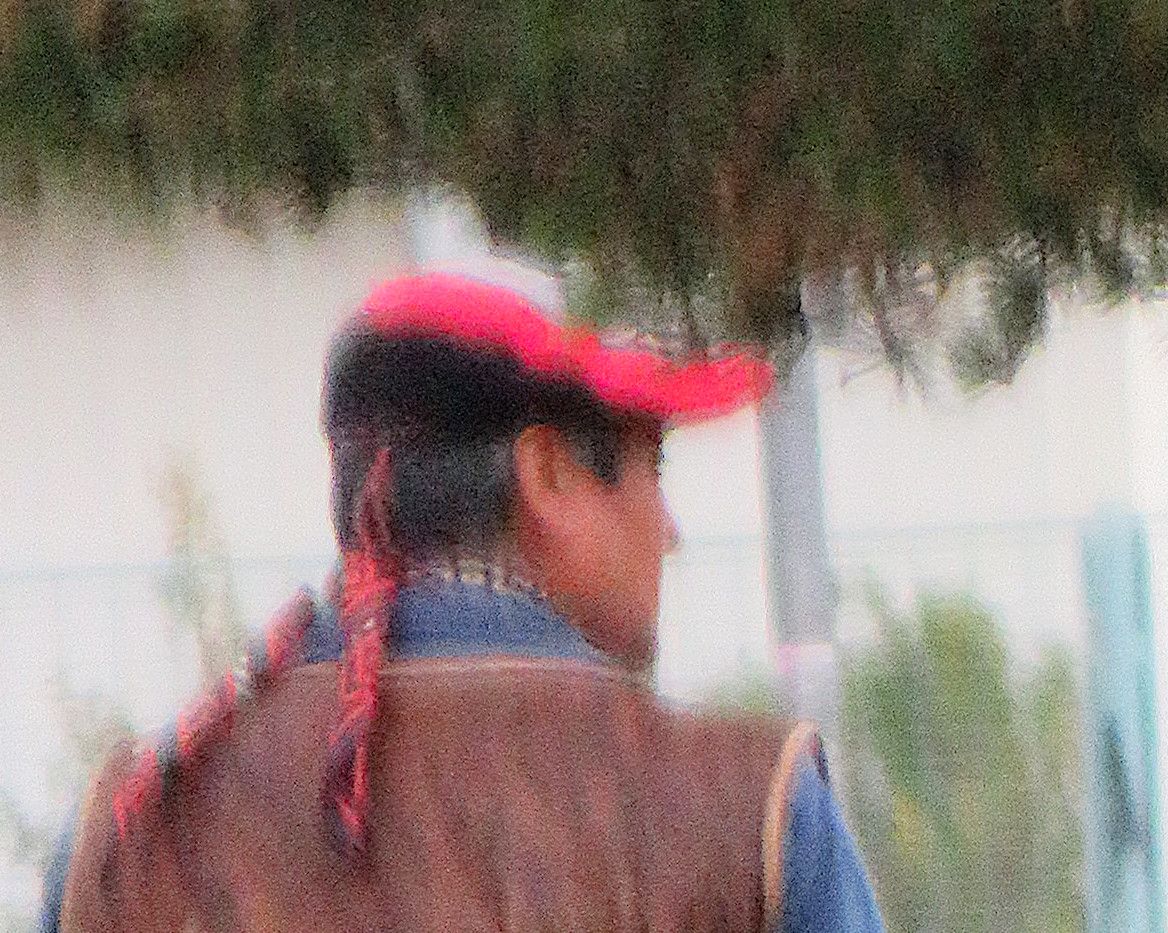
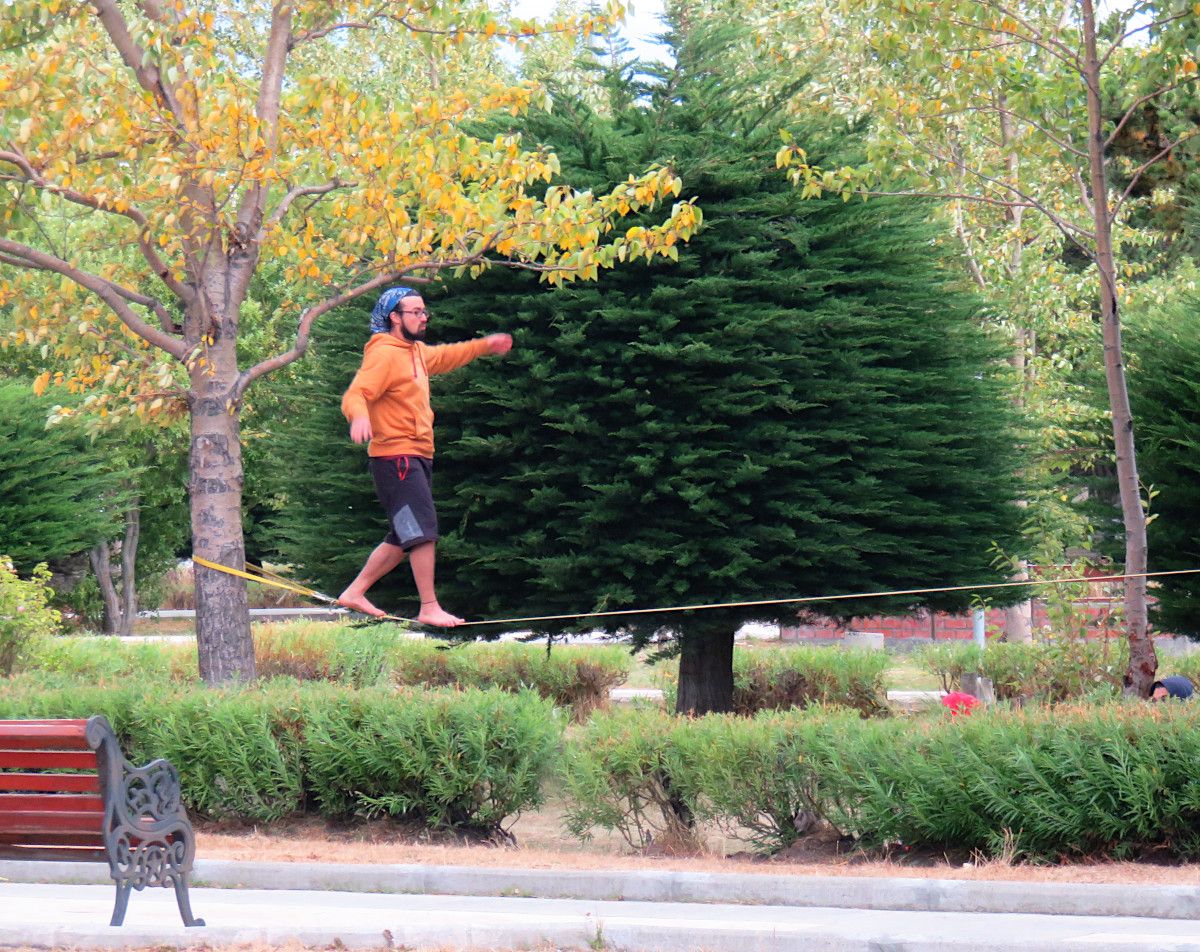
Cafe Kaiken was a real find. The owner/chef opens his cozy 14 seat cafe for two hours for lunch and 2 ½ hours for dinner. Reservations are highly recommended. It doesn't look like much from the outside. The Idiots found the place closed, but the kitchen delivery door was open and the chef came out to chat. They lucked out and got reservations for opening time – 7 PM. The menu is small, emphasizing quality and creative flavors. There's a good wine list. The pasta is homemade and fresh. The Idiots had raviolis... lamb with a merlot reduction and octopus ink pasta stuffed with shrimp with a savory coconut milk sauce. The chef is likely to come out to chat with diners to be sure they are happy with their food. This was not what they expected in a small town cafe!
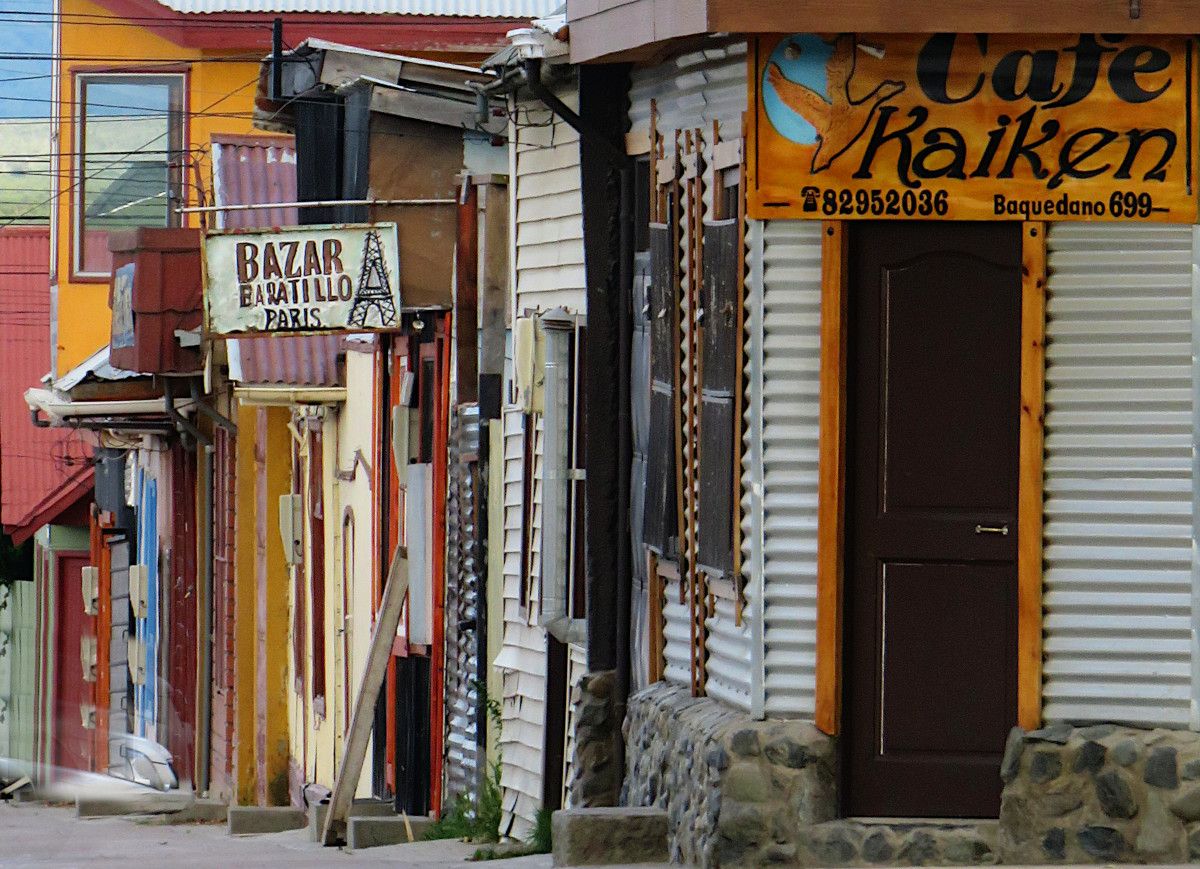
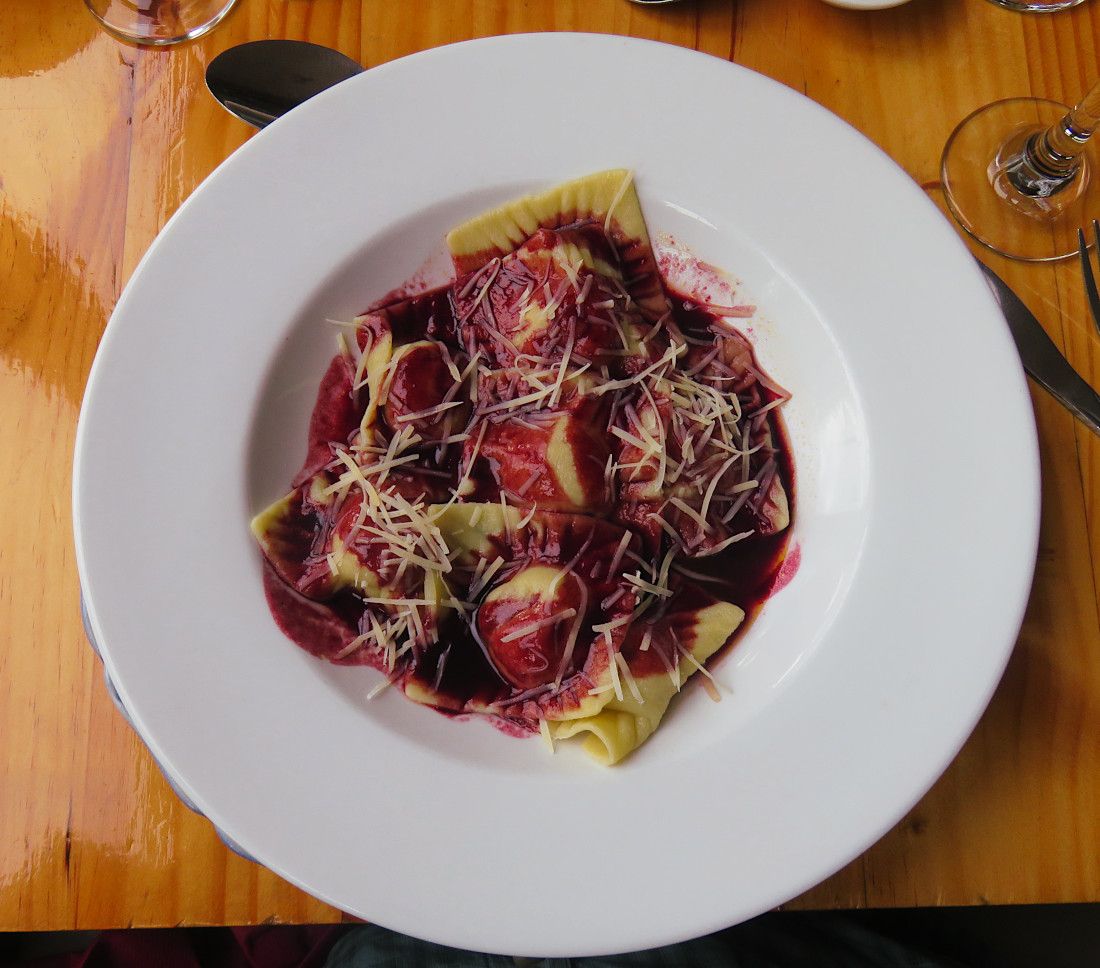
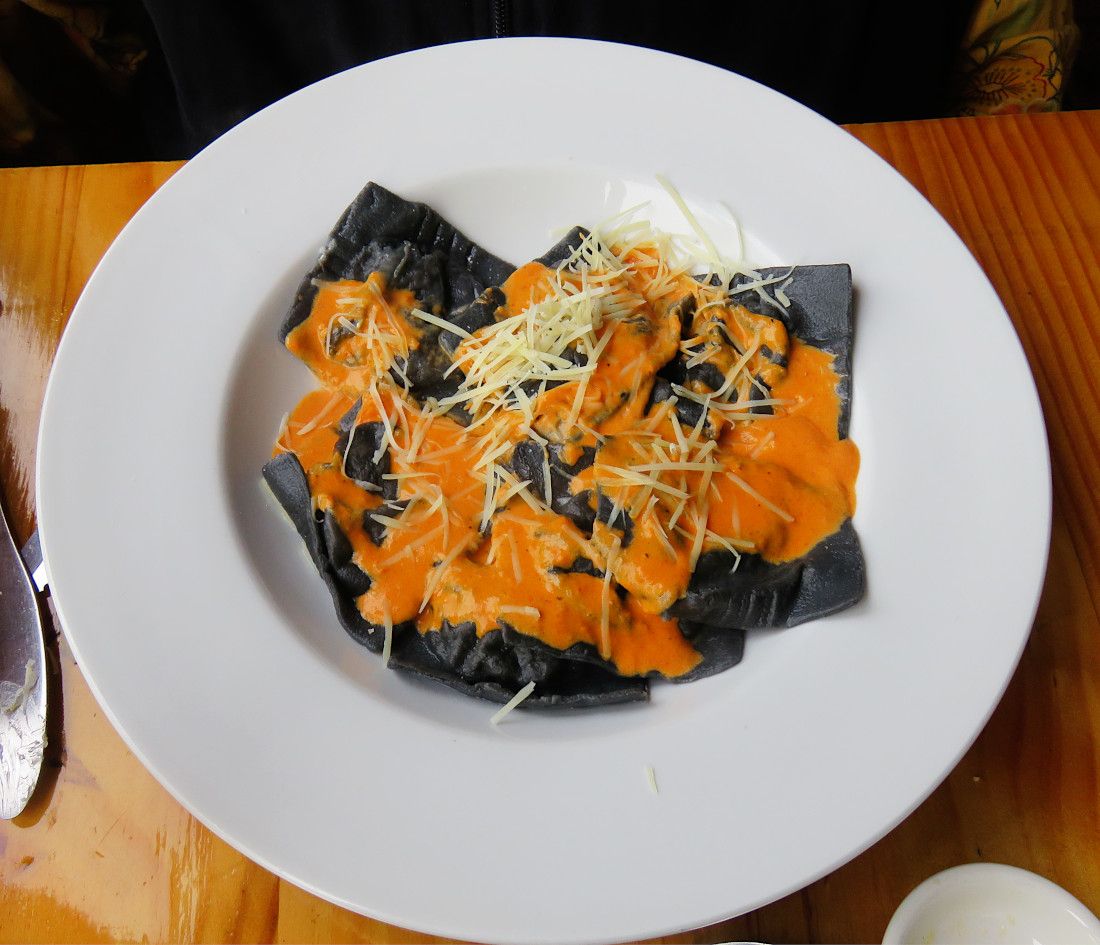
Lodging for the night was a small private room in Puma House - a hostal primarily serving trekkers. The young owner was energetic and welcoming... and made major points with Idiot She by aplogizing to Idiot He before telling her she had the most beautiful eyes he'd ever seen!
She did not tell him that when she had her cataracts removed, the inserts used were glass that has a refractive trick that makes her eyes sparkle. He was right – no reason to give away the magic!
The next morning as they took a goodbye picture, he surprised her with a kiss!
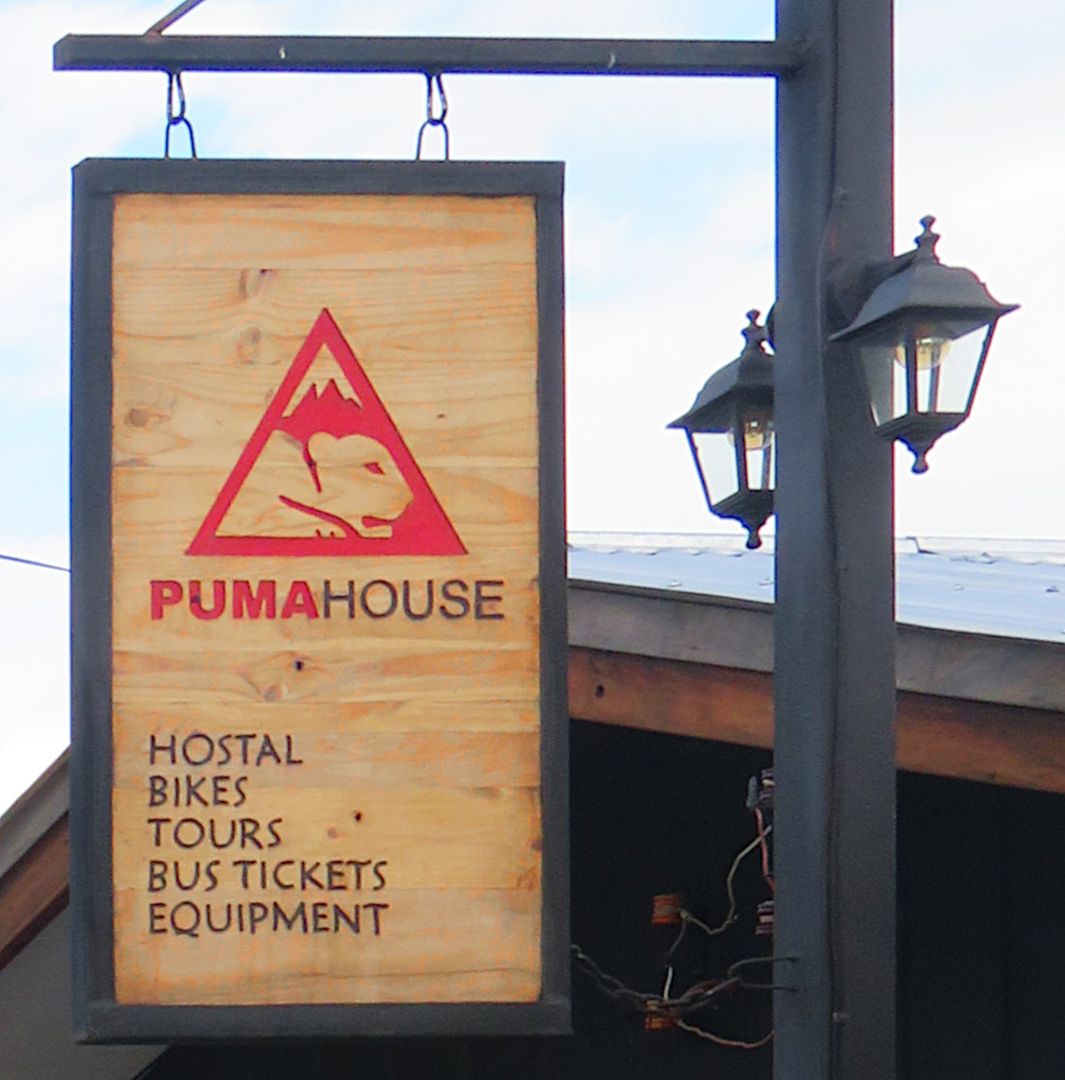
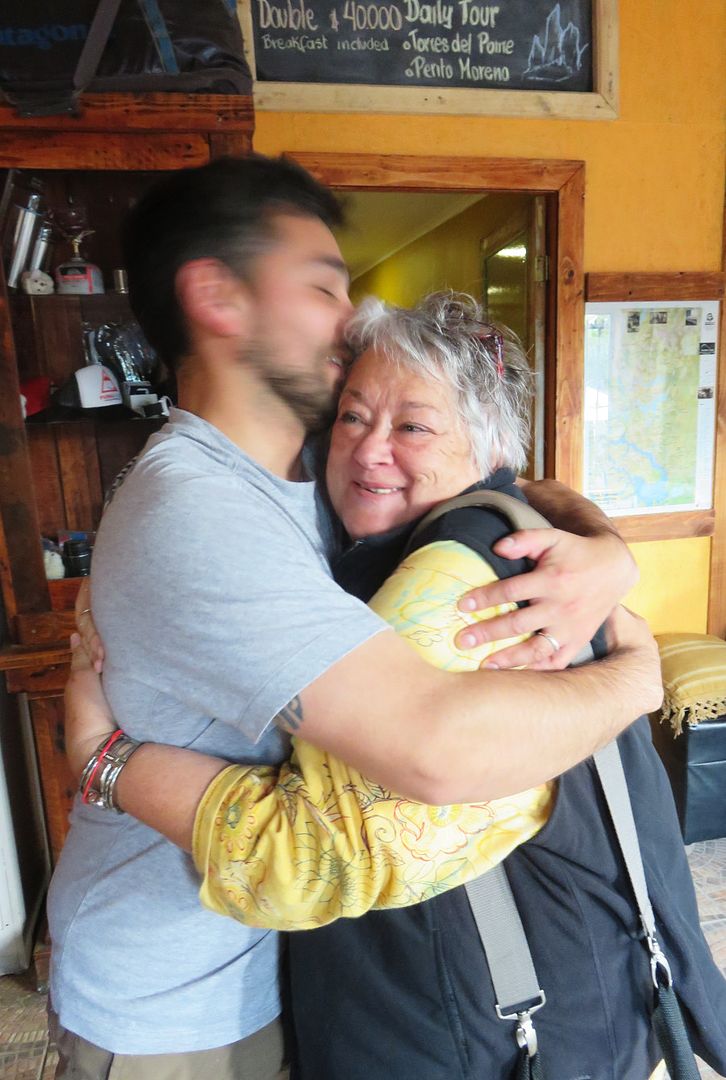
Last but not least... Idiot She captured one of their favorite images of the trip. A gaucho, a dog, and a “pineapple” of sheep... timeless...
